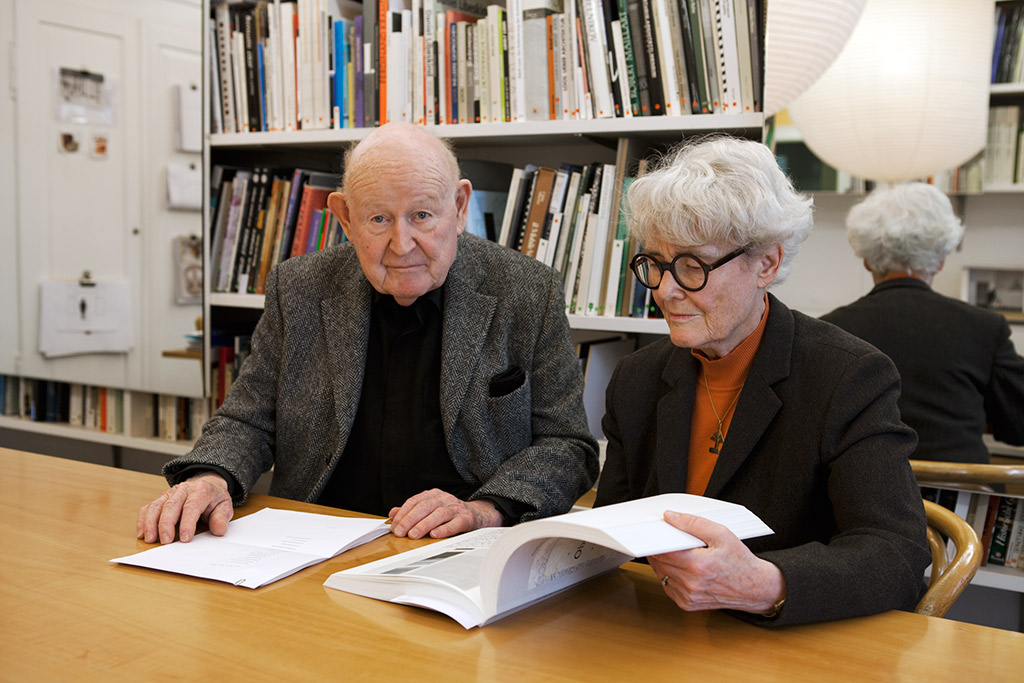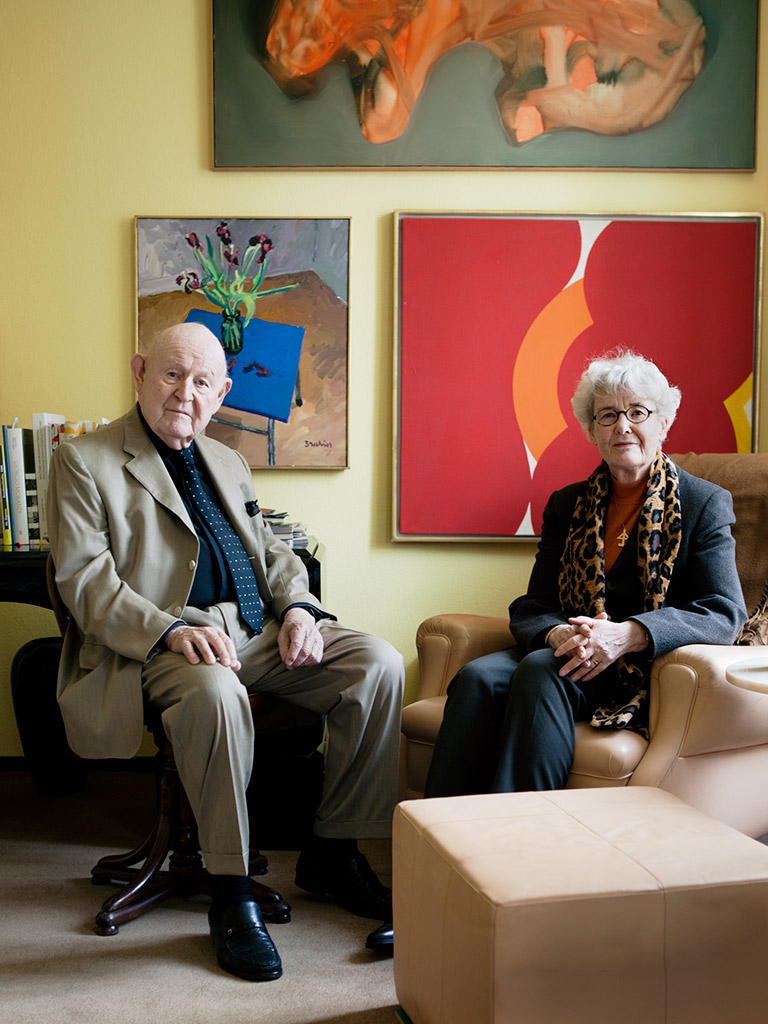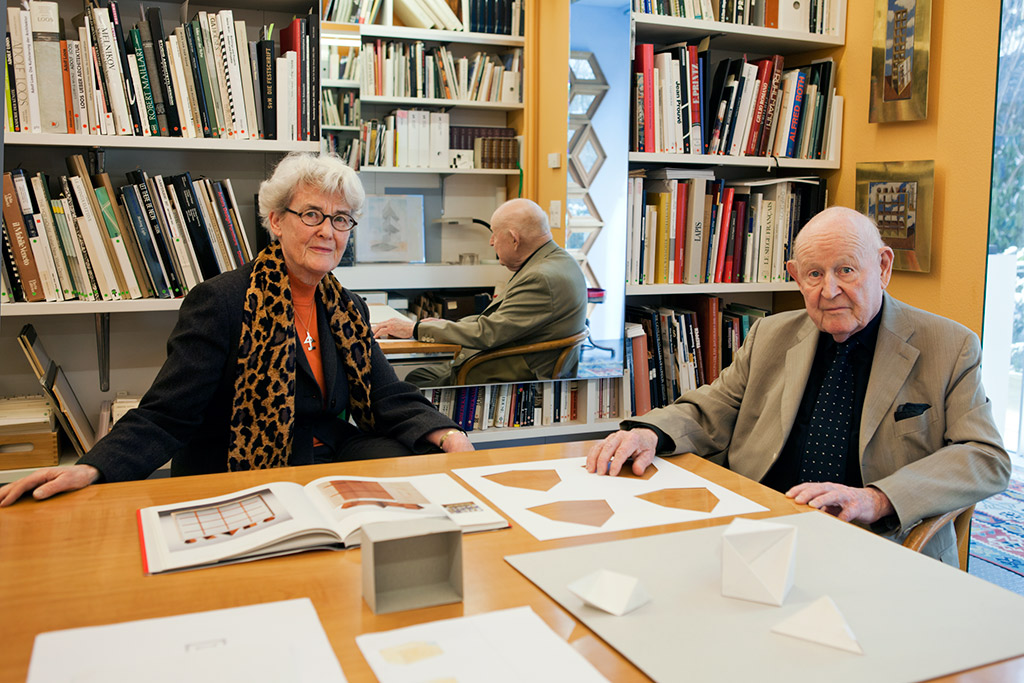Trix & Robert Haussmann, 1933 and 1931
Architects, interior designers and product designers, Zurich
The Swiss Confederation recognizes Trix and Robert Haussmann for their remarkable contribution to Switzerland’s architectural and design history. Their dedicated and thoughtful challenging of aesthetic conventions was ahead of its time and deserves to be rediscovered today.
Trix and Robert Haussmann may be counted among the most important Swiss architects of the twentieth century. Against the current backdrop in today’s Switzerland of a clear neo-modernist trend, it is fascinating to note how this architect couple were educated in, influenced, and eventually moved away from a particularly Swiss form of modernism. With the perspective of time, there is much to be newly discovered in their approach: the so-called 'Lehrstücke' (‘teaching items’) series, drawings, poems, fabric collections, or buildings they designed, such as the Boutique Weinberg and Shopville in Zurich’s main railway station. Trix and Robert Haussmann’s designs can be found in a diversity of forms and which today help to shape our daily lives.
The way in which the surprising design of the Da Capo Bar adapts itself to the original architecture of Zurich’s main station is emblematic of their practice. While the trompe-l’oeil murals in the interior of the bar imitate the historic façade, this imitation classicism is broken down through bizarre mirror elements, as illusory means are used to create a surreal setting. Such design elements deeply rooted in Mannerism dissented not only from modernist doctrine but also everything that had been done up until then in Swiss architecture. Far removed from the tenets of modernism regarding the transparency of architecture, their playful designs followed their own form of critical Mannerism which manifested itself both creatively and explicitly in 1980 as 'Manierismo Critico'. In one of their nine model-like 'Lehrstücke', for example, an imitation ancient column with individual drawer segments represents ‘the disruption of the form by the function’.
Since the founding of their joint studio Allgemeine Entwurfsanstalt (General Design Institute) in 1967, they have critically and ironically questioned the rigid doctrines of architectural history. That same year, their first joint work was produced for the 'Chair-Fun' exhibition of the Swiss Werkbund. In its rejection of all functionality, their 'Chair Quartet' anticipated the critical-ironic tone of their later manifesto: in addition to the frame of an Eames armchair converted into a 'Maso Chair', three Thonet chairs woven into each other, and an apparently melting 'Choco Chair', the exhibition featured a shining anti-chair made of neon tubes which threatened to collapse under the slightest load. To this day, Trix and Robert Haussmann continue to work on their complex body of work, encompassing architecture, design, architectural theory and urban planning.
Fredi Fischli and Niels Olsen








